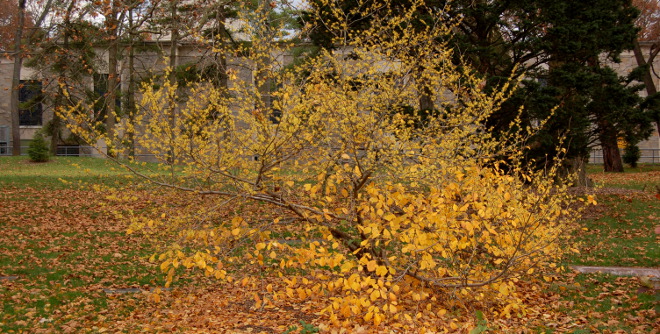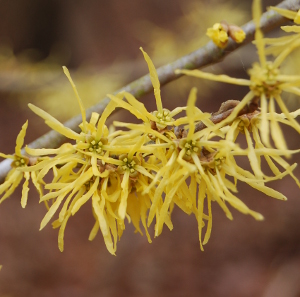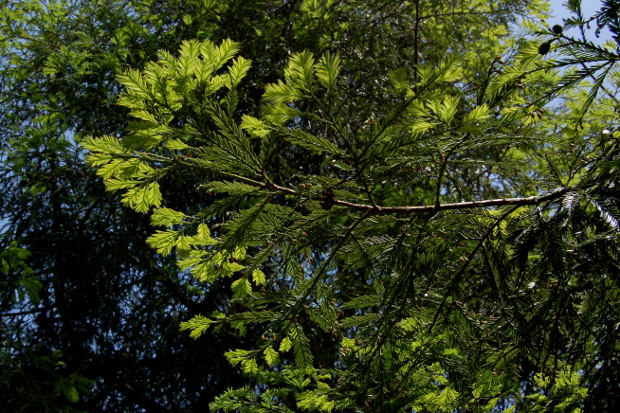
I must say a few words of kindness for our native common witchhazel (Hamamelis virginiana), the last woody plant of the year to venture forth with new flowers.
Like katsura, common witchhazel might be first detected with a whiff—in this case a sweet tea fragrance—and then tracked down. Sure enough, there are the flowers, like wee basil chiffonades in yellow. The blooms are sustained over a long period, beginning in mid-October and not sputtering out until the end of November.
 I think of common witchhazel as a shrub, though it can attain treelike proportions of 30 by 30 feet. Shrubifying it by rejuvenation pruning every 10 years–as William Cullina suggests in Native Trees, Shrubs, and Vines–would keep the blooms on an intimate eye-level. It is not demanding to grow, but like other witchhazels both exotic and native, if given the comforts of light shade, steady moisture, good drainage, and protection from drying winds, it will prosper rather than survive.
I think of common witchhazel as a shrub, though it can attain treelike proportions of 30 by 30 feet. Shrubifying it by rejuvenation pruning every 10 years–as William Cullina suggests in Native Trees, Shrubs, and Vines–would keep the blooms on an intimate eye-level. It is not demanding to grow, but like other witchhazels both exotic and native, if given the comforts of light shade, steady moisture, good drainage, and protection from drying winds, it will prosper rather than survive.
Even in the best circumstances, however, the blooms are often reticent, hiding behind leaves which turn the same yellow as the flowers and which may not cleanly drop off. I saw this plant at Cox Arboretum in Dayton, Ohio one year, shyly blooming from behind golden leaves. Everyone passed it by, oblivious, shooting pictures of more showy specimens. “Well,” I said, “I noticed you, darling.”




























Please let me know what you think. I’d love to hear from you!